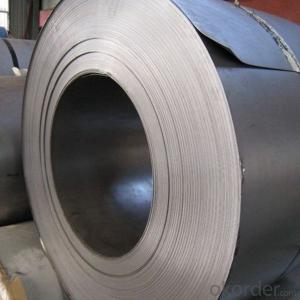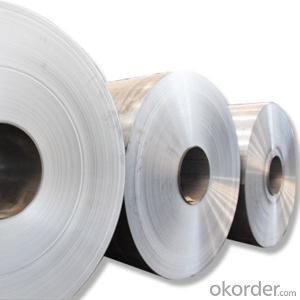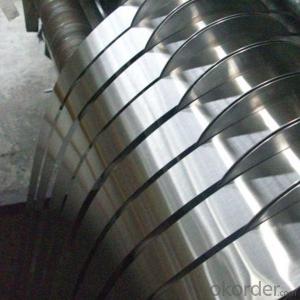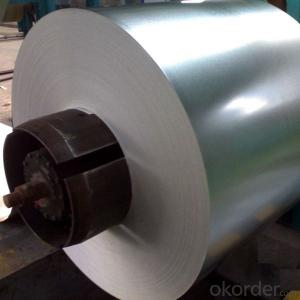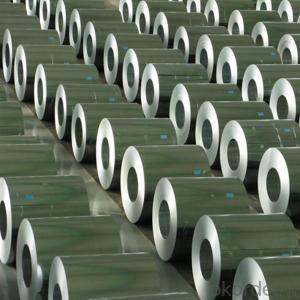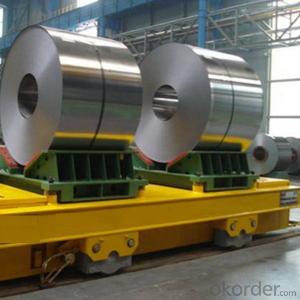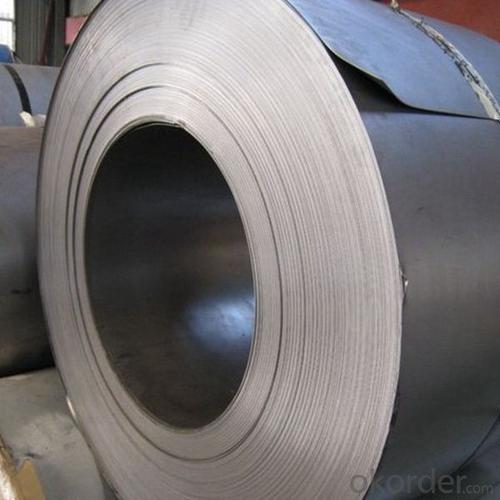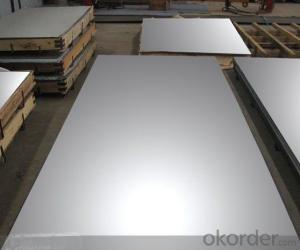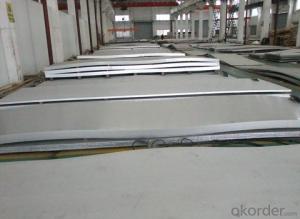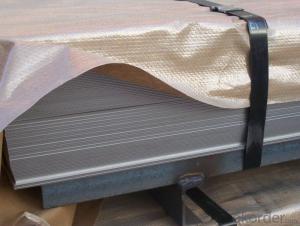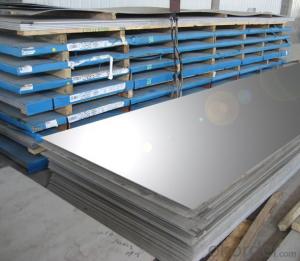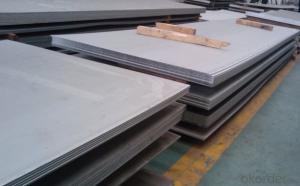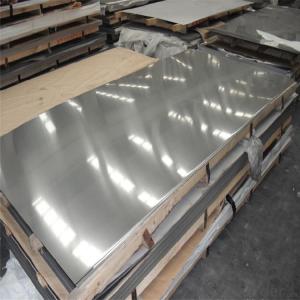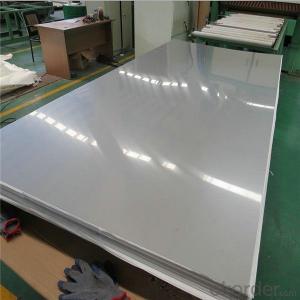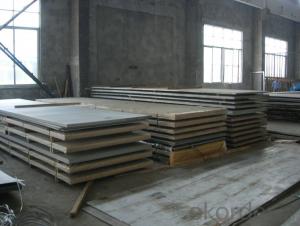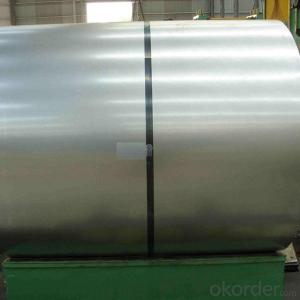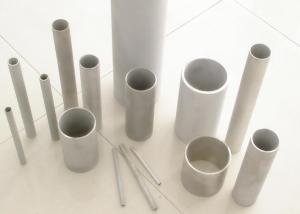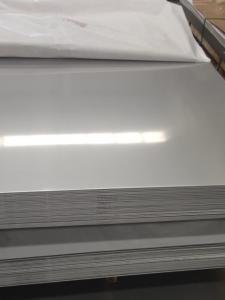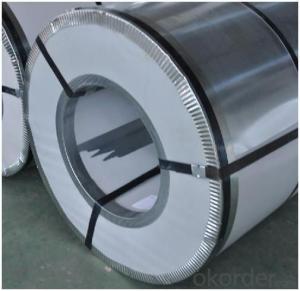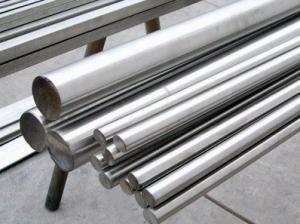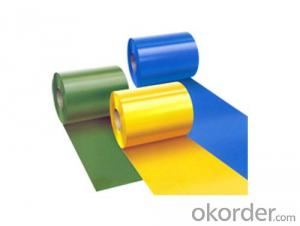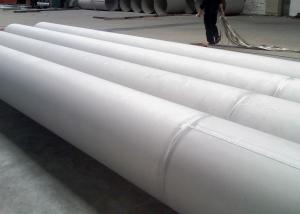Steel Stainless 316 NO.2B Finish With Cheap Price
- Loading Port:
- Tianjin
- Payment Terms:
- TT OR LC
- Min Order Qty:
- 25 m.t.
- Supply Capability:
- 25 m.t./month
OKorder Service Pledge
OKorder Financial Service
You Might Also Like
Specification
Products Description for Stainless Steel Coils/Sheets:
Name: stainless steel coils/plates/sheets
Discharge Port: Any Port, China
Cold Rolled Size: Thickness0.3-8mm,Width:280-2100mm
Hot Rolled Size: Thickness3-14mm,Width:650-2100mm
Hot Rolled/Cold Rolled Plates : Thickness2-80mm,Width:1500-3000mm
Coil Weight: About 20 Tons
Grade: 201,202,304/304L/304H, 316/316L/316H, 409/L,430 etc.
Technique: Hot Rolled/Cold Rolled
Finish:2B, BA, 2D, No1, No2 etc
Edge: Mill Edge / Slitting Edge
Packaging: In bundles, or as customer's requirement
Place of Origin: Made in China
MOQ: 20 Tons
Payment Terms: 100% LC at sight, or 100%TT in advance
Delivery Time: With 30-40 days after deposit
Application for Stainless Steel Coils/Sheets
Finish | Definition | Application |
2B | Those finished, after cold rolling, by heat treatment, pickling or other equivalent treatment and lastly by cold rolling to given appropriate luster. | Medical equipment, Food industry, Construction material, Kitchen utensils. |
BA | Those processed with bright heat treatment after cold rolling. | Kitchen utensils, Electric equipment, Building construction. |
NO.3 | Those finished by polishing with No.100 to No.120 abrasives specified in JIS R6001. | Kitchen utensils, Building construction. |
NO.4 | Those finished by polishing with No.150 to No.180 abrasives specified in JIS R6001. | Kitchen utensils, Building construction, Medical equipment. |
NO.1 | The surface finished by heat treatment and pickling or processes corresponding there to after hot rolling. | Chemical tank, pipe. |
Packaging & Delivery for Stainless Steel Coils/Sheets:
Packaging Detail Standard export packing or following customer's demand
Delivery Time: Within 30-40 days after deposit or according to the order quantity
Details for the products:
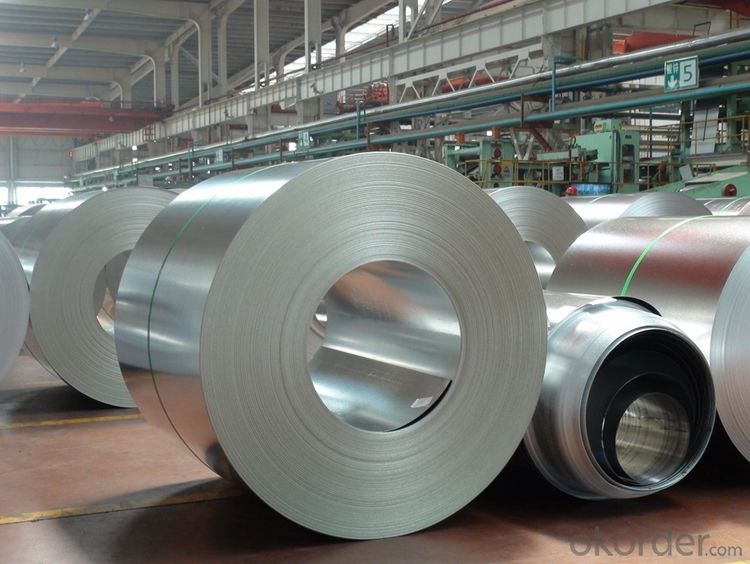
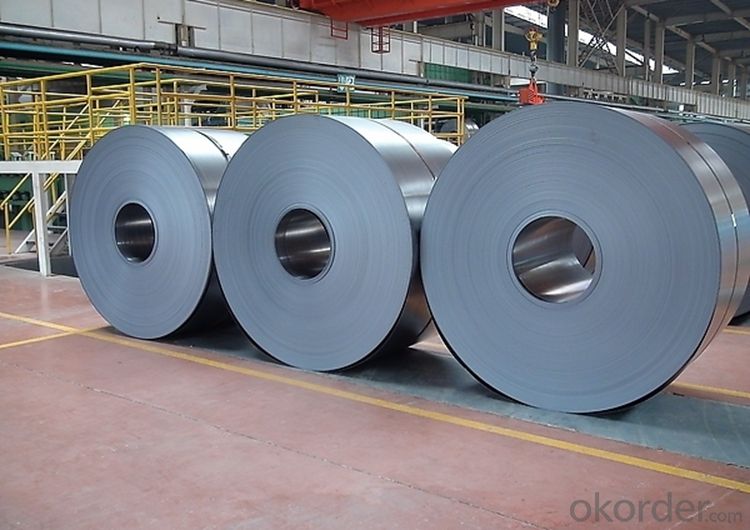
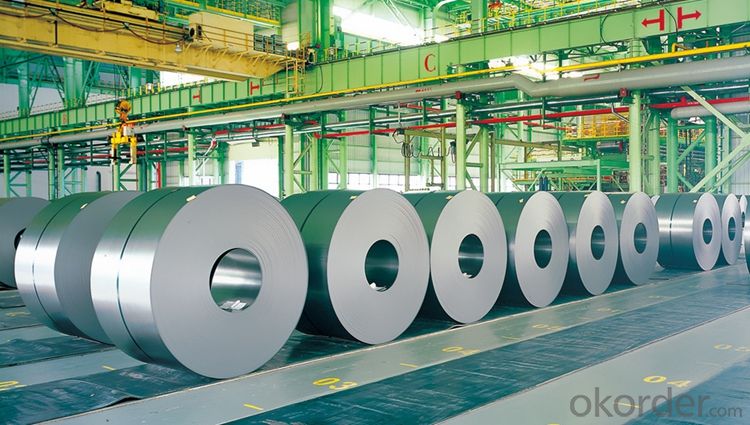

Packaging & Delivery for Stainless Steel Coils/Sheets:
Packaging Detail | Standard export packing or following customer's demand |
Delivery Time | Within 30-40 days after deposit or according to the order quantity |
FAQ for Stainless Steel Coils/Sheets:
Q:How to order?
A: Please send us your purchase order by email or fax .or you can ask us to send you a proforma invoice for your order .We need to know the following information for your order.
1) Shipping information-company name, street address, phone number, fax number, destination sea port
2) Product information – Quantity, Specification (steel type, thickness, width, surface finish)
3) Delivery time required
4) Forwarder's contact details if there's any in China
FAQ for Stainless Steel Coils/Sheets:
Q:What are the advantages of your company ?
A: We have many professionals, technical personnel, more competitive prices and best after-dales service than other stainless steel companies.
Q:Can you arrange the shipment ?
A: Sure we can help you with the shipment. We have forwarders who have cooperated with us for many years.
FAQ for Stainless Steel Coils/Sheets:
Q:How to order?
A: Please send us your purchase order by email or fax .or you can ask us to send you a proforma invoice for your order .We need to know the following information for your order.
1) Shipping information-company name, street address, phone number, fax number, destination sea port
2) Product information – Quantity, Specification (steel type, thickness, width, surface finish)
3) Delivery time required
4) Forwarder's contact details if there's any in China
FAQ for Stainless Steel Coils/Sheets:
Q:What are the advantages of your company ?
A: We have many professionals, technical personnel, more competitive prices and best after-dales service than other stainless steel companies.
Q:Can you arrange the shipment ?
A: Sure we can help you with the shipment. We have forwarders who have cooperated with us for many years.
- Q: How do you prevent distortion when welding stainless steel sheets?
- To prevent distortion when welding stainless steel sheets, one must ensure proper heat control and minimize the amount of heat input. This can be achieved by using a lower welding current and speed, employing a proper welding technique, and utilizing preheating or post-welding heat treatment methods if necessary. Additionally, using clamps or fixtures to hold the sheets in place during welding and distributing the heat evenly across the joint can also help prevent distortion.
- Q: Are stainless steel sheets suitable for marine applications?
- Stainless steel sheets are indeed a great choice for marine applications. The reason lies in their remarkable resistance to corrosion, which makes them perfect for use in marine environments where exposure to saltwater and other harsh elements is common. These sheets are equipped with a protective oxide layer that prevents any rust or corrosion, ensuring their long-lasting and sturdy nature in marine applications. Moreover, stainless steel sheets possess exceptional strength and impact resistance, making them capable of enduring the severe conditions and stresses encountered in marine environments. As a result of their corrosion resistance, durability, and strength, stainless steel sheets have gained immense popularity in the marine industry.
- Q: Can stainless steel sheets be used for food packaging?
- Yes, stainless steel sheets can be used for food packaging. Stainless steel is a durable and non-reactive material that does not impart any taste or odor to the food. Additionally, it provides excellent protection against moisture, oxygen, and contaminants, making it suitable for food packaging applications.
- Q: How do you prevent galling on stainless steel sheets?
- To prevent galling on stainless steel sheets, it is important to use lubricants or anti-seize compounds during the manufacturing or assembly process. This helps reduce friction and surface adhesion, minimizing the risk of galling. Additionally, using proper cutting tools and techniques, such as slow speeds and low feed rates, can also help prevent galling.
- Q: What are the benefits of using brushed stainless steel sheets in hospitality design?
- Using brushed stainless steel sheets in hospitality design offers several benefits. Firstly, brushed stainless steel has a sleek and modern appearance that adds a touch of elegance to any space, making it a popular choice in the hospitality industry. Additionally, stainless steel is highly durable and resistant to corrosion, ensuring that it can withstand the demands of a busy hospitality environment. It is also easy to clean and maintain, making it a practical choice for surfaces that require frequent sanitation. Furthermore, brushed stainless steel sheets are versatile and can be used in various applications, from countertops and backsplashes to furniture and fixtures, allowing designers to create cohesive and visually appealing spaces.
- Q: What are the benefits of using patterned stainless steel sheets in interior design?
- Using patterned stainless steel sheets in interior design offers numerous benefits. Firstly, these sheets provide a unique and modern aesthetic to any space. The patterns etched into the stainless steel can range from geometric designs to intricate motifs, adding a touch of elegance and visual interest to walls, ceilings, or furniture. This can enhance the overall ambiance of a room and make it stand out. Secondly, patterned stainless steel sheets are highly durable and long-lasting. Stainless steel is known for its strength and resistance to corrosion, making it an ideal material for interior design applications. These sheets can withstand daily wear and tear, making them suitable for high-traffic areas such as restaurants, hotels, or public spaces. Moreover, patterned stainless steel sheets are low maintenance. Unlike other materials, stainless steel is easy to clean and does not require special care or regular maintenance. Simple wiping with a damp cloth or using mild cleaning agents is sufficient to keep the sheets looking pristine. This makes them a practical choice for interior design, especially in areas where hygiene is crucial. Additionally, patterned stainless steel sheets offer versatility in design. They can be used in various applications, including wall cladding, room dividers, backsplashes, or even as decorative accents. With a wide range of patterns and finishes available, designers have the freedom to create unique and customized looks to suit any style or theme. Lastly, using patterned stainless steel sheets in interior design is environmentally friendly. Stainless steel is a recyclable material, meaning it can be reused or repurposed without causing harm to the environment. By incorporating sustainable materials into interior design, we contribute to reducing waste and promoting eco-conscious practices. Overall, the benefits of using patterned stainless steel sheets in interior design include their aesthetic appeal, durability, low maintenance requirements, versatility, and environmental friendliness. These sheets offer a practical and visually pleasing solution to elevate the design of any space.
- Q: How do I prevent stress relaxation on stainless steel sheets?
- Stainless steel sheets undergo stress relaxation when exposed to high temperatures or constant stress. To prevent stress relaxation in stainless steel sheets, the following measures can be taken: 1. Carefully choose the stainless steel grade: Different grades of stainless steel have different resistance to stress relaxation. Opt for a grade with high resistance, such as austenitic stainless steels like Type 304 or Type 316. 2. Avoid excessive temperatures: Operate the stainless steel sheets within the recommended temperature range. Exposing them to temperatures beyond this range can accelerate stress relaxation. Ensure that the operating temperature remains within the permissible limits. 3. Control stress levels: Minimize stress during fabrication and installation. Do not excessively bend, stretch, or deform the material, as this introduces stress. Properly design and fabricate components to reduce stress concentration points. 4. Consider post-weld heat treatment: If the stainless steel sheets are welded, consider performing heat treatment after welding. This involves subjecting the welded area to controlled heating and cooling cycles to relieve residual stresses and minimize the potential for stress relaxation. 5. Reduce exposure to aggressive environments: While stainless steel sheets are corrosion-resistant, exposure to aggressive chemicals or environments can accelerate stress relaxation. Avoid prolonged exposure to corrosive substances or environments that can compromise the material's integrity and cause stress relaxation. 6. Regularly inspect and maintain: Periodically inspect the stainless steel sheets for signs of stress relaxation, such as deformation, cracks, or dimensional changes. Regular maintenance and timely repairs can help identify and address any issues before they worsen. 7. Seek advice from experts: If unsure about preventing stress relaxation in stainless steel sheets, consult metallurgical experts or stainless steel manufacturers. They can provide guidance on the best practices and materials to ensure long-term performance and prevent stress relaxation. By implementing these preventive measures, the risk of stress relaxation in stainless steel sheets can be significantly reduced. This ensures their durability and maintains their structural integrity over time.
- Q: Can stainless steel sheets be painted?
- Yes, stainless steel sheets can be painted. However, it is important to properly prepare the surface to ensure good adhesion. This typically involves cleaning, sanding, and applying a primer before painting.
- Q: How do you drill holes in stainless steel sheets?
- To achieve accurate and clean results, it is necessary to follow specific steps and use the right tools when drilling holes in stainless steel sheets. Here is a detailed guide on how to accomplish this task: Step 1: Gather the required tools, including a drill machine, suitable drill bits for stainless steel (cobalt or carbide are recommended), a center punch, safety goggles, work gloves, and a clamp or vise to secure the stainless steel sheet. Step 2: Select the appropriate drill bit. Since stainless steel is a tough material, regular drill bits may not be effective. Instead, opt for cobalt or carbide drill bits that are specifically designed for cutting through hard metals. Step 3: Mark the hole position by using a center punch to create a small indentation at the exact spot where you intend to drill. This will prevent the drill bit from slipping when starting the hole. Step 4: Firmly secure the stainless steel sheet using a clamp or vise on a workbench or surface. This will prevent any movement during drilling and ensure precise and clean holes. Step 5: Prioritize safety by wearing safety goggles and work gloves to protect your eyes and hands from metal debris and sharp edges. Step 6: Begin drilling by placing the drill bit on the marked indentation and applying gentle pressure to start the hole. Use a lower speed setting on your drill machine to prevent overheating, gradually increasing the pressure as you continue drilling. Step 7: Apply cutting fluid or lubricant on the drill bit while drilling to reduce friction and heat buildup. This will extend the life of the drill bit and prevent discoloration or warping of the stainless steel sheet due to excessive heat. Step 8: Monitor the drilling progress and adjust the speed and pressure accordingly. It is crucial to maintain a steady pace and avoid applying excessive force to prevent drill bit breakage or damage to the stainless steel sheet. Step 9: Periodically stop drilling to remove metal debris from the hole, ensuring that it does not clog and that the hole remains clean. Step 10: Once the desired hole size is achieved, slowly withdraw the drill bit from the stainless steel sheet. Use a file or deburring tool to smooth out any rough edges around the hole. By following these steps and utilizing the appropriate tools, you can successfully drill precise and clean holes in stainless steel sheets. Remember to take your time, prioritize safety, and properly maintain your tools for optimal results.
- Q: What's the cheapest kind of stainless steel plate? What's the model and how much is it?
- Ferritic stainless steel (with magnetic) inside 409 minimum, average price of 7800 yuan / ton, including tax, the proportion of 7.75, the formula is the same as above
Send your message to us
Steel Stainless 316 NO.2B Finish With Cheap Price
- Loading Port:
- Tianjin
- Payment Terms:
- TT OR LC
- Min Order Qty:
- 25 m.t.
- Supply Capability:
- 25 m.t./month
OKorder Service Pledge
OKorder Financial Service
Similar products
Hot products
Hot Searches
Related keywords
